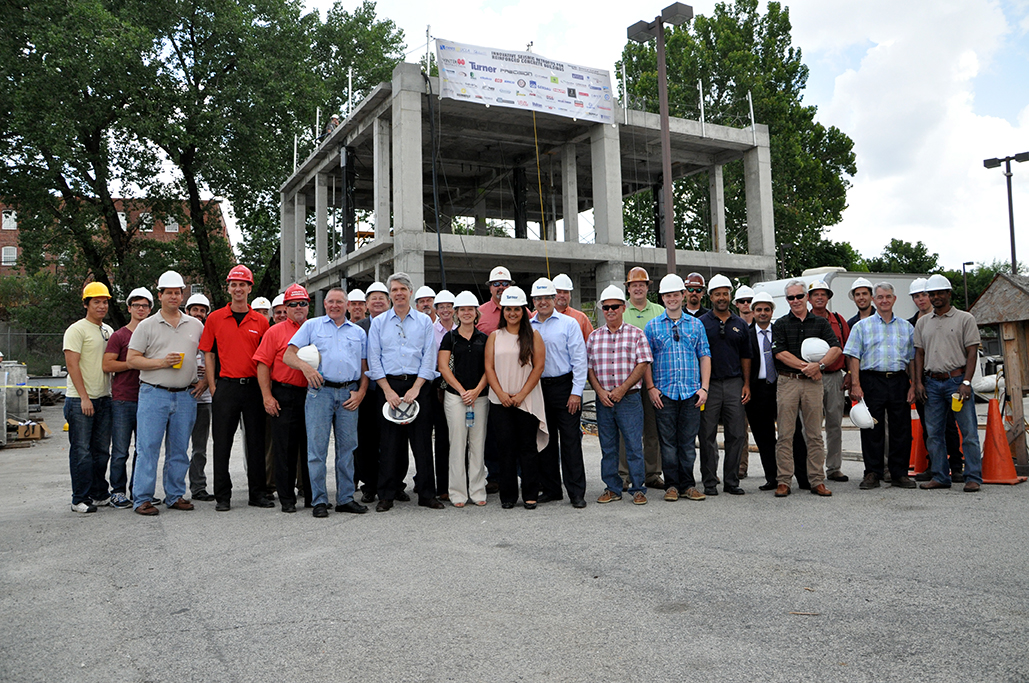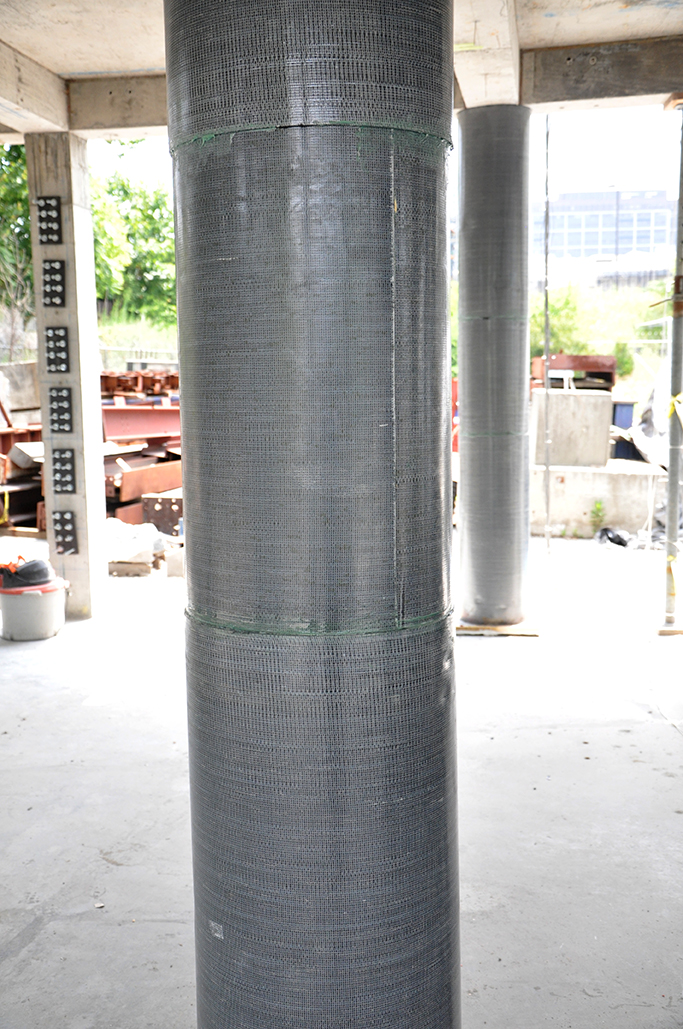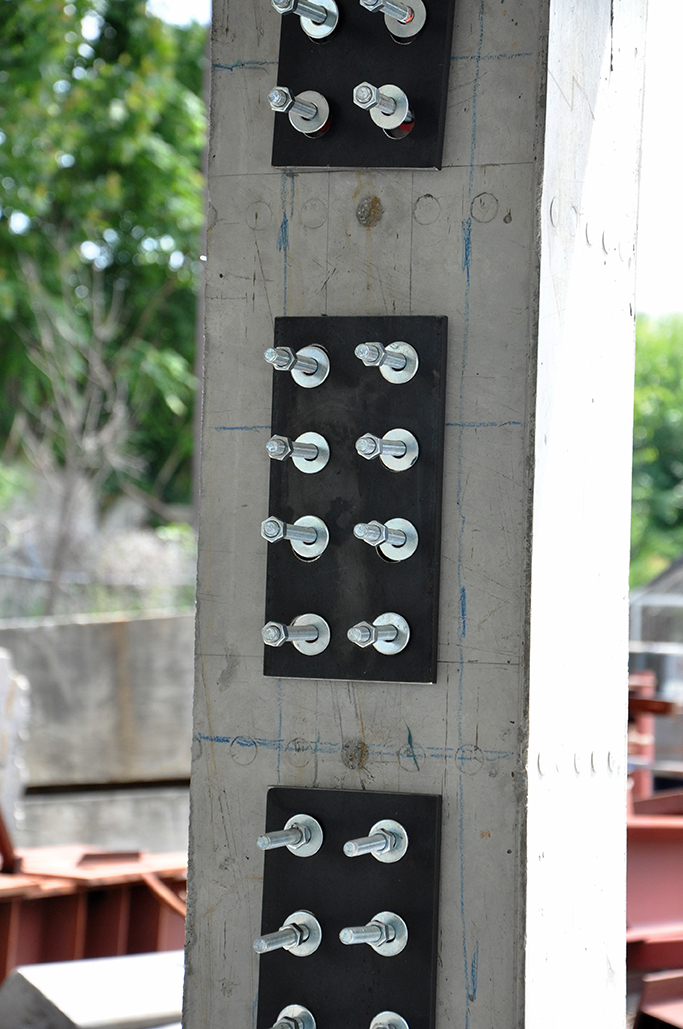Researchers recreated an earthquake Friday at the School of Civil and Environmental Engineering’s (CEE) structures lab.
Using a giant shaker from the University of California, Los Angeles (UCLA), they mimicked the effects of a quake on a two-story reinforced concrete building they constructed this spring to destroy over the course of the summer.
The National Science Foundation (NSF)-funded project will develop innovative ways to retrofit such buildings so they can better withstand earthquakes. Friday’s work was the first test of one of those retrofitting methods, a carbon fiber wrap.

The researchers literally wrapped each concrete column in a carbon-fiber fabric impregnated with epoxy. Then they wired up more than 200 sensors and powered up UCLA’s hydraulic linear shaker.
See what happened in the video below:
The field testing is led by Tim Wright, a CEE doctoral student studying with Karen and John Huff School Chair Reginald DesRoches. DesRoches leads the overall project along with CEE’s Yang Wang and researchers from Howard University, Rice University and Virginia Tech.
The full-scale tests are a novel approach to such seismic research. Usually shake tests like these are done at one-fifth or one-tenth scale or using existing buildings. This hybrid approach was an expensive undertaking supported by three dozen companies that donated materials, labor and expertise to construct the building. Many joined the team to watch Friday’s tests.

The project—part of NSF’s George E. Brown Jr. Network for Earthquake Engineering Simulation (NEES)—will probe two other retrofitting strategies in similar tests over the coming months.
One will use a different kind of carbon fiber in a cylindrically shaped jacket that goes around the columns. Grout fills the empty space between. The other strategy will use a steel frame between columns.
 |
 |
The idea is that these new passive structural systems will be more cost-effective and easier to install than current seismic retrofits in wide use.
The building is separated into four sections so each round of tests starts with a fresh, undamaged portion. Friday was day two of tests on the carbon-fiber wrapped section. After roughly 40 shakes and subsequent evaluation tests are complete, the team will remove all the sensors and shift them, along with the hydraulic shaker and a smaller mass eccentric shaker, to the third section for another round of tests.
Click through the slideshow below to see more of the project and Friday’s test.
Created with flickr slideshow.
